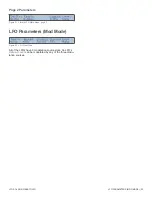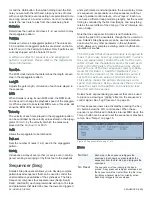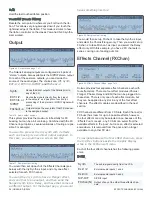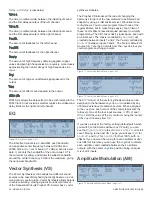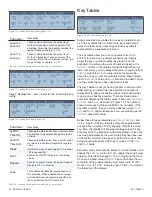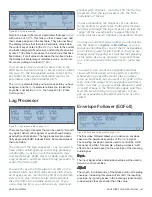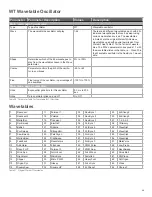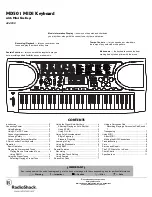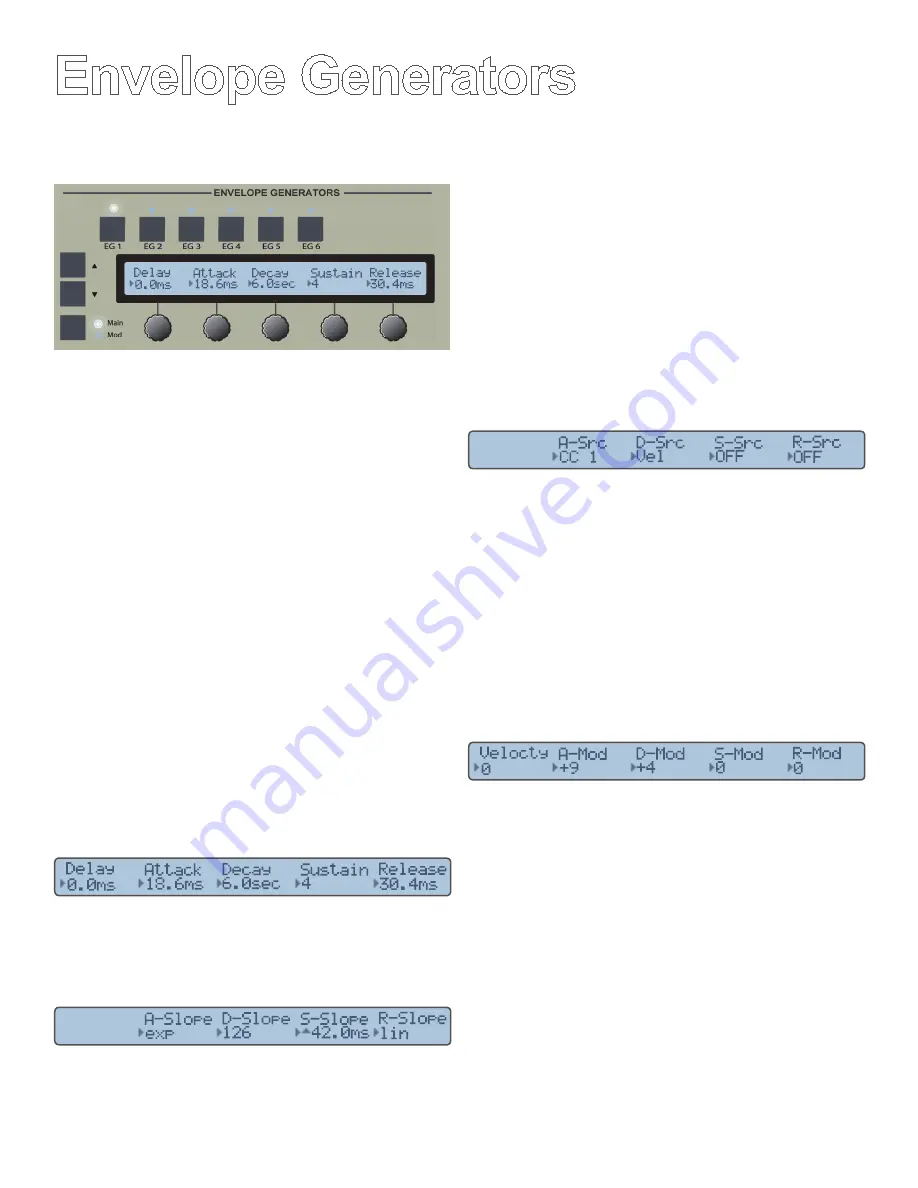
EG PARAMETERS (MOD MODE)
34 | ENVELOPE GENERATORS 1-6
Envelope Generators
(VCA)
Figure 53. Envelope Generator Panel
Envelope Generators
1-6
Solaris has six DADSR envelope generators that are fully
assignable and available in the modulation source lists.
There is also a looping envelope generator (see “Looping
Envelope (LoopEG)” on page 41). Each segment can be
separately modulated. Each has variable attack, decay, and
release slopes. Sustain also has a ‘slope’ control, however
in the case of Sustain, this control allows you to set up
an additional segment that either goes to zero value (with
a negative slope), or to the maximum sustain level (with
positive slope). Envelope segment values are show in time
increments, from 0.0 ms to 20.0 seconds.
EG 6 (VCA) is the final envelope controlling the output of
Solaris’s four VCAs.
EG Parameters (Main Mode)
Page 1 Parameters
Figure 54. Envelope Generator Main Mode, page 1
The delay segment delays the onset of the attack segment
by the time interval specified.
Page 2 Parameters
Figure 55. Envelope Generator Main Mode, page 2
The
Slope
parameter controls the shape of the segment.
A value of zero is a linear slope, while 127 is exponential.
The sustain slope of Solaris’s envelope generators is actu-
ally a second decay segment that ramps down to 0, or up
to 127, depending on the value. The sustain slope range
is in seconds and ms. In addition, there is a small custom
graphic character to the left of the value – either a “down”
arrowhead if a negative value, or an “up” arrowhead for a
positive value. This is to help describe that any negative
value eventually ends up taking the EG output ‘down’ to 0,
while any positive value takes it ‘up’ to 127 (full +) value.
EG Parameters (Mod Mode)
Page 1 Parameters
Figure 56. Envelope Generator Mod Mode, page 1
The modulation source list for the envelope generators is
limited to: velocity, key tracking, modulation wheel, and as-
signable continuous controllers 1-4.
When using
Velocity
as a modulation source for a seg-
ment, a negative amount will cause shorter time values with
higher velocities; a positive value will cause longer values
with higher velocities. Careful adjustment and balance
between the initial segment’s settings and the mod amount
is usually needed to obtain desired results. Shorter time
values will limit the noticeable effect of velocity modulation.
Page 2 Parameters
Figure 57. Envelope Generator Mod Mode, page 2
The
Velocity
parameter controls the overall amount of the
envelope to its destination. Higher values require a greater
velocity to reach their maximum value.
When a segment’s modulation amount is set at zero, the
actual segment time/level is heard. With the amount at
+127, maximum velocity will give results equal to the actual
(original) time/level setting. If time values longer than the
initial setting are desired, you must first set the velocity
mod amount, and then adjust the initial setting to achieve
desired results. Likewise for amounts of negative value,
minimum velocity will yield the original settings, and higher
values will be ‘shorter’ than the initial setting.
Summary of Contents for Solaris
Page 1: ...User Guide Version 1 ...














